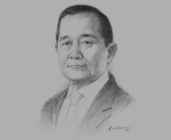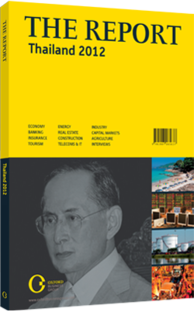OBG talks to Thares Punsri, Chairman, National Broadcasting and Telecommunications Commission (NBTC)

Interview: Thares Punsri
In what ways do you think convergence affects growth forecasts for the telecoms sector?
THARES PUNSRI: In the future we foresee a convergence in interests between broadband and the wider telecoms industry to cater to the growing demand for data connectivity amongst the public. As media and entertainment companies seek to enter this converged market, we may see increasing competition in content and other value-added services. As the converged industry regulator, the NBTC has several responsibilities, including managing spectrum in the public interest as well as regulating broadcasting and telecommunications businesses to promote free and fair competition.
Our main responsibilities are the three “master plans” in spectrum management, broadcasting and telecommunications, that provide a five-year implementation guideline for the industry and all stakeholders. We will play an important role as regulators and facilitators for the sustainable growth of broadcasting and telecommunications markets in Thailand in terms of liberalisation, creating a competitive environment, protecting consumers and enabling social development.
What is the outlook for the broadcast industry?
THARES: The sector in Thailand has long been criticised for being a state monopoly. This is now being reformed by transitioning the sector to a liberalised and competitive broadcasting market. We will establish proper licensing system, restrain the concentration of ownership and distribute available spectrum to all stakeholders equally. We will also set policies that encourage fair competition and ensure freedom of the media.
In addition, we plan to switch from analogue to digital by 2016 to move Thailand’s broadcasting industry to a fully digital broadcasting era. The first step is to implement the trial phase of digital television in 2012. This will provide significant benefits in terms of quality, reliability and innovative services, as well as more choices of content and services. The transition will create attractive investment opportunities in the sector.
How can regulatory and fiscal incentives be used to encourage broadband penetration?
THARES: We are aware of the importance of developing broadband infrastructure to support increasing demand for high-speed internet, mobile data and other value-added services. NBTC plans to hold a 3G mobile auction on the 2.1 GHz frequency band in 2012 and foster an efficient broadband network expansion throughout the country to satisfy high demand for information services and economic growth, as well as to enhance social welfare.
The aim to develop broadband is enshrined in the 2020 national information and communications technology policy. By contributing to the stability and security of citizens’ lives, it will also affect economic growth. Yet broadband service penetration remains low at 3.5% compared to other countries and is mainly centred in metropolitan areas. This has led to a digital divide between urban users and rural users. Broadband is a key priority for the government, and we are supporting the expansion of broadband access through both fixed-line and wireless technologies.
When is the anticipated launch of commercial 3G services with 2.1 GHz frequency?
THARES: The NBTC has an auction to issue licences for its new 3G services expected in late 2012. Passing the five-year master plans in early 2012 was an important preliminary step. Since the NBTC was established, the regulatory framework and necessary institutions have been put in place to allow the bidding process to go forward. Once services are rolled out there will be a significant investment opportunity, which will also allow the value of data services to rise significantly.
The foremost challenge to the introduction of 3G will be to set the appropriate rules to ensure liberalisation and promote free and fair competition. We plan to establish processes that provide for regulation as well as ensure independence, transparency, predictability, legitimacy and credibility for wireless services.
You have reached the limit of premium articles you can view for free.
Choose from the options below to purchase print or digital editions of our Reports. You can also purchase a website subscription giving you unlimited access to all of our Reports online for 12 months.
If you have already purchased this Report or have a website subscription, please login to continue.

